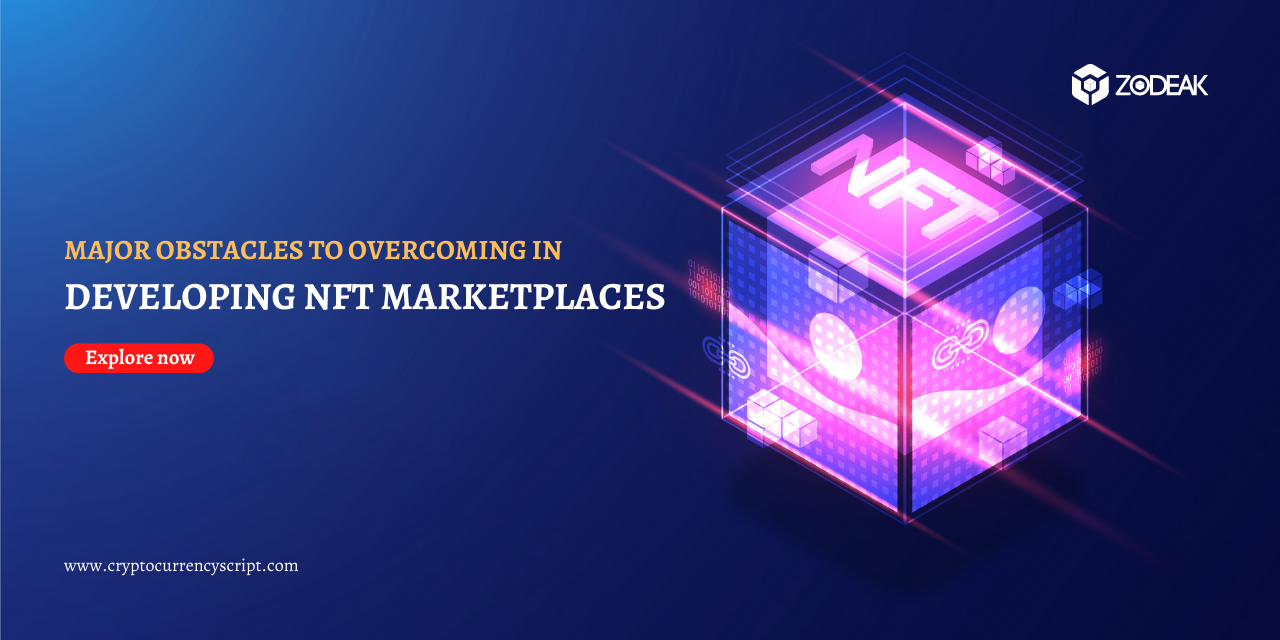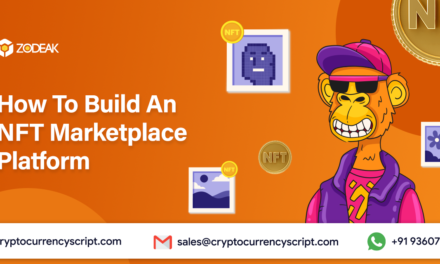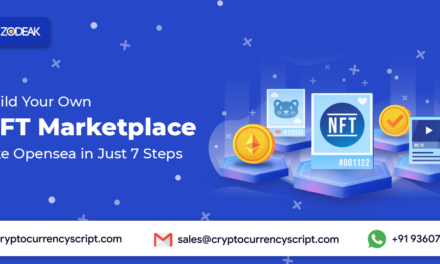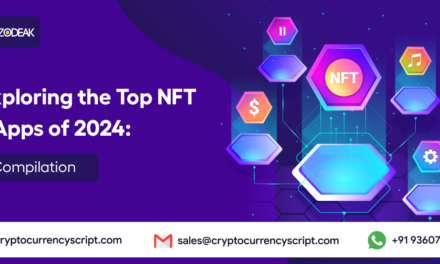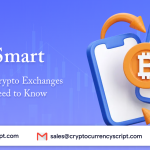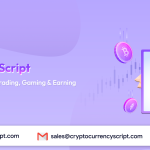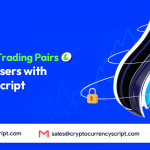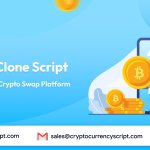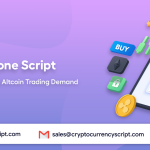In the past 2 years, NFTs have gained popularity. This is mainly because of rendering innovative business chances to cryptopreneurs globally. Moreover, numerous companies starts to blend their ideas with dynamic environments, and for most of them, the NFT marketplace arose as the best option.
According to estimates, the size of the global NFT marketplace will be increased from USD 3 billion in 2022 to USD 13.6 billion at the end of the year 2027 at a CAGR of 35.0% growth.
Recently, the most widely used NFT marketplace for tokens is OpenSea. super rare, Solanart, and Nifty Gateway are well-recognized NFT marketplaces that completely concentrate on NFT artwork.
The count of NFT marketplaces gets increased because of the fast expansion of the NFT sector and more cryptopreneurs wish to step into this domain. But the NFT marketplace creation process is much more difficult as it requires skilled professionals with full knowledge of the niche. But because of their lack of knowledge and readiness to start a development process, numerous recently emerged markets gets failed. Our tech experts support us to create this guide by sketching out the most common issues faced while create an NFT marketplace. This guide will be useful for the one who is interested to develop the NFT marketplace. This guide depicts in detail the obstacles you will face while face in creating an NFT marketplace and the keys to addressing those issues to ensure a smooth launch.
Are you thirsty to know in detail?
Then continue to read……
Principal Issues with NFT Marketplaces
High and Unexpected Fees
NFT trades are consistently accomplished by excessive and unreasonable gas fees. But most of the newbies are unaware of them. Today, most of the available NFTs are created on the Ethereum blockchain. Moreover, token standards such as ERC20, ERC721, and ERC1155 are used to create smart contracts. To predict its value, the Ethereum blockchain utilizes the PoW technique. To be precise, the major issue with the development of the NFT marketplace is high gas fees.
Inadequate user experience
As the NFT market is still developing, NFT customers go for other crypto platforms, launchpads, and also a platform with well-secured signup & verification procedures. To develop a user account, a few platforms request their users to submit their personal information like government IDs, addresses, and phone numbers. Though it is fine with data security, most of the NFT marketplace doesn’t provide training for newbies for account creation. So they face numerous issues while creating an account. People are forced to search for better solutions because of their bad experiences.
Unsatisfactory Copyright Protection
For all the artists who wish to develop digital art for gaining profit from it, it is best suited by NFTs. Here the problem arises from comfort which means photos and other tokens are copied and disseminated online without the procedure’s permission. Moreover, there is no legal framework in the NFT marketplace sector to guarantee or support the actual creator of an NFT or the following copyright proof.
Lack of Expression and Creativity for Creators
The NFT marketplace platform was created, especially for artists to sell their creations online and to express their creativity. But most of the platforms use censoring or moderation elements that restrict the creativity and independence of artists. Even if it is ok for a few Collection tokens, it may disrupt the whole process for the majority of artists who are interested in using your NFT marketplace.
Absence of UI/UX considerations
Generally, UI determines the interaction of customers with your marketplace. Making a better and more intuitive user experience is the goal followed by intelligible, straightforward, and high-quality UI. This is the most expected one from the user’s point of view.
UX/UI is the most prominent aspect of the success of your platform. But most of the NFT marketplaces focus on protection, quick development, and verification. An outmoded, and dull UI won’t make your NFT marketplace stand out among the competitors.
Fortunately, this issue is immediately solved by working with a qualified designer who has professional experience. They will assure that each component is clear and simple so that the user’s objectives are satisfied simply.
Mediocre customer service
As we said previously, the NFT business is still in its infancy and requires time for the users to be aware of its possibilities and applications. Few businessmen believe that they are experts in this domain, so they fail to learn the value of assisting their users. As a platform owner, you might be familiar with the functions of the platform but you can’t be sure what issues your users may encounter.
Because of this, you must be in need of a ready-made solution for all customer queries, whereas providing 24hr customer service is much more difficult in most NFT marketplaces. Make sure that your team is not providing a basic template, instead provide genuine assistance to people who need help at any time.
Limited Methods of Payment
The modern NFT marketplace lacks in providing numerous payment options. Still, there are numerous NFT marketplaces not allowing customers to make payments with Bitcoin despite the use of various payment options like debit cards, credit cards, and online banking. However, analysts expect that these issues would be fixed shortly as the market is getting trendy and cryptopreneurs are demanding these platforms.
Industry confusion
In today’s world, the term NFT is more trendy, but this doesn’t mean that all are aware of what it is and how to make money from it. The reason for this is there is not sufficient information about NFTs and moreover the technical information is completely lacking which makes it look complex and incredible to people. Furthermore, most of the market tries to blend everything in one place, which makes it confusing for beginners to switch between categories, generate tokens, make their selections, and handle their payments.
Cyberthreats and the Risks of Online Fraud
The likelihood of cyber threats to token holders has increased because of the sudden popularity of NFTs. Numerous hackers create new methods to steal money or tokens from user accounts. Though the NFT marketplace utilizes 3 or 4 layers of security to protect the platform, but still hackers hacking the platform with advanced technologies.
Well-established NFT marketplace also experiences these types of issues. Moreover, the hackers themselves enter the NFT platform as a creator and sell phoney artwork. This is due to the increasing phoney NFT drops, giveaways, airdrops, and imitation of well-recognized NFTs.
Evaluation Obstacles
Users and developers often encounter this problem in the NFT marketplace. Modern artists struggle to fix the exact price for their work as it is based on a broad range of variables such as tools used, audience participation, creativity, context collection, etc.
Setting up the fixed price for some NFTs is much more difficult as the NFT market is still developing. Due to this, users are unsure about how to analyze their own work and what standards to utilize. Because of this, the price swings remain constant, users feel it is more difficult to evaluate the tokens.
Legal Obstacles
The government doesn’t have authority over the NFT market. To classify NFTs for legal purposes may be implemented soon, nations like the EU, Japan, and the UK are going forward with their appropriate strategies. This is mainly due to the market’s remarkable growth rate, which would soon force it to rank among the largest global industries. Hence, there is a requirement for a regulatory agency that will arise rapidly. Furthermore, now NFTs are used in various contexts, so the regulatory body would need to adjust to the policies and laws of a dynamic industry which is evolving.
Wrapping Up
The NFT market is expanding significantly. Because of this, numerous businessmen started to think about a different way to access this market: NFT Marketplace Development. But not all of them are aware of the difficulties in creating this platform.

